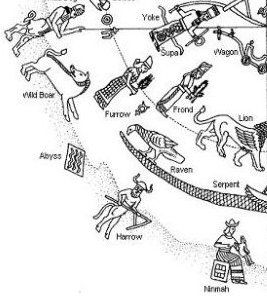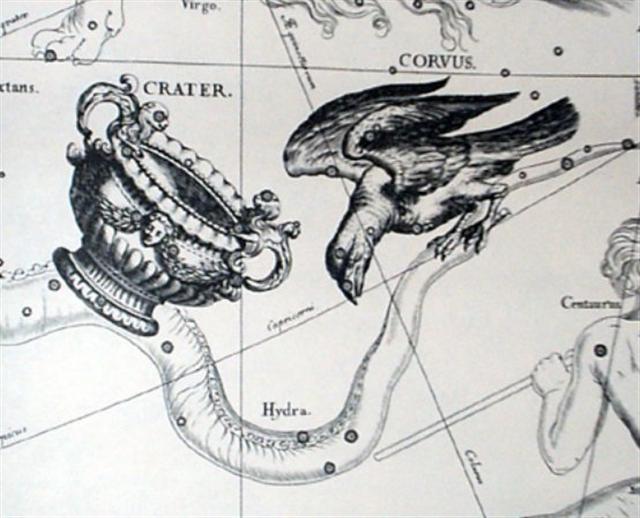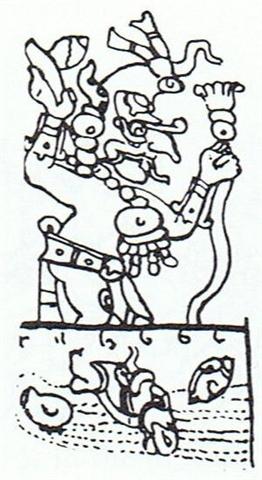The Chinese stations are ending with the bright Gienah and the last pair of stations evidently indicate the opposite of the firm rod needed by a ruler - snakes and worms are unsuitable.
In the Babylonian zodiac the sign of Mercury is between the pair of manifestations of Virgo, Furrow and Frond. Mercury is close to Sun and therefore it cannot be observed in other positions than close to Mother Earth. Such creatures are not walking up on the surface of the earth as the tapir, goat, stag, horse, and ox. They are mostly under the ground, inside earth. This way of thinking will then identify the monkey and the gibbon as creatures high above the ground. The pair Alkes and Gienah are representatives of the underground level (18º S respectively 23º S):
We have documented where this opposing pair is located, viz. just before 11h respectively at equinox:
The Chinese list will then return to its beginning, which is determined by Virgo:
It would be strange if not also the C text was using the position of Spica (α Virginis):
October 10 (10-10 or 8-10) has Rogo with an uplifted marama in front:
It is also the first of 3 figures with comparatively small bottoms. The 4th Rogo has no eye and this figure marks the September equinox, when Gienah rose heliacally. The 5th figure has no mouth and this was RA day 193 when Mimosa rose heliacally. The ruling stars are not distributed in a pattern with 13 days from the one to the next. For instance are there 19½ days from Alkes (α Crateris) to Gienah (α Corvi) and ca 17½ days from Gienah to Spica. Clearly, though, it is possible to connect Hatinga Te Koe with the pair Alkes and Gienah - there should be 2 ruling stars because the staff is broken in 2 pieces. Spica could correspond to Roto Iri Are. In the Tahitian list the name for Spica is Ana-roto. The flag of Brazil has Spica above the band, although its declination is in the southern hemisphere (10° 54′ S). The upside down orientation for an observer south of the equator makes it natural to put Spica below the midline, i.e. above the band in the flag. For an observer in the northern hemisphere, though, it looks as if someone has 'dug up' (are) the star from the 'sea' (and it could have been the Rain God, or possibly St James):
| |||||||||||||||||||||||||||||||||||||||||||||||||||||||||||||||||||||||||||||||||||||||||||||||||||||||||||||||||||||||||||||||||||||||||||||||||||||||||||||||||||||||||||||||||




















